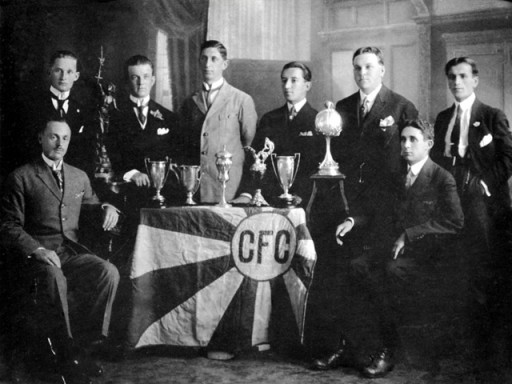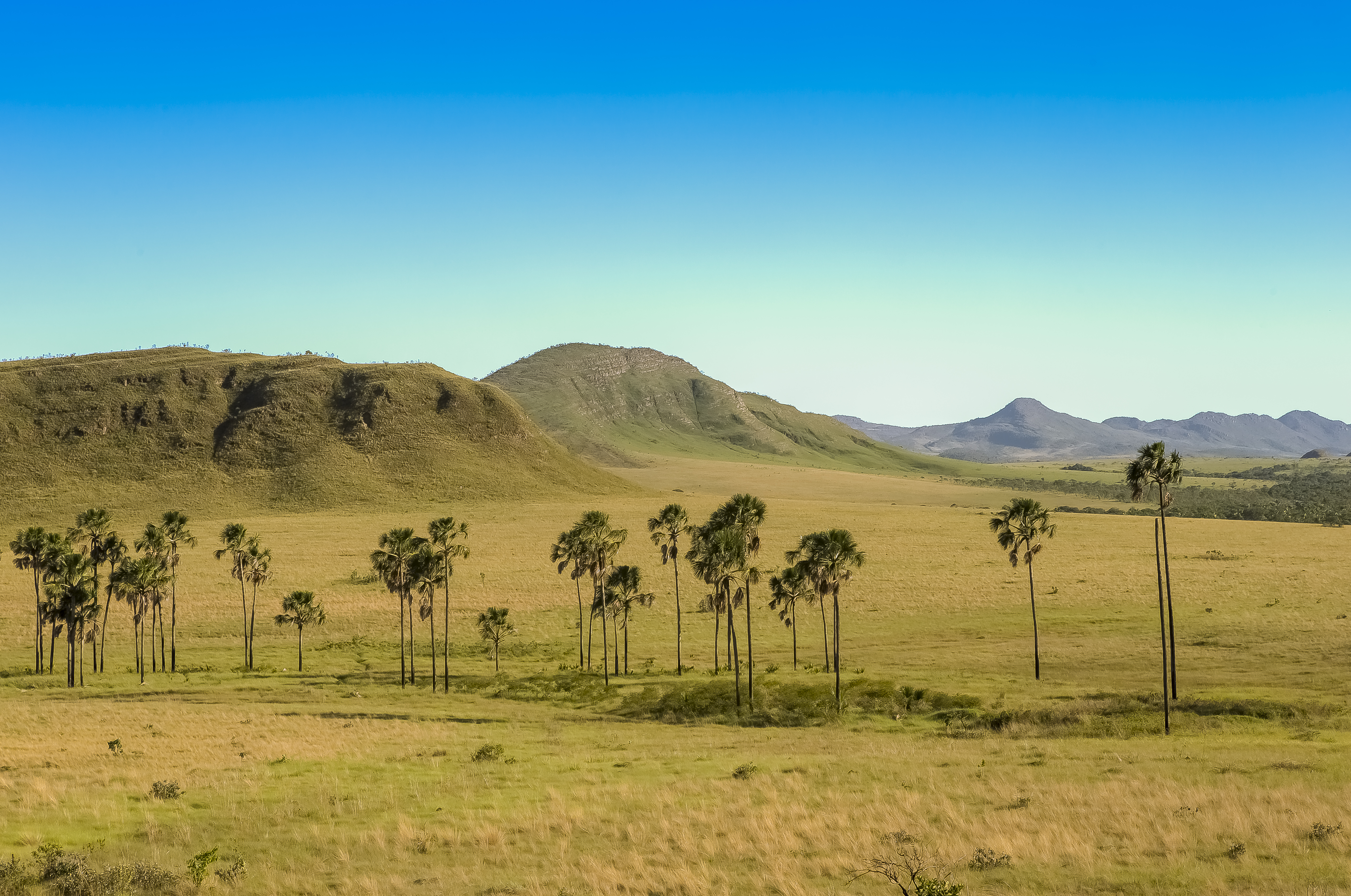|
Copa União Green Module
The Green Module of the Copa União is the tournament referred to the organizing body of the Clube dos 13, which is not officially recognized by the CBF, but which had reunited the most important Brazilian football clubs in the 1987 season. Green Module (Taça João Havelange) First round The clubs in Group A play against clubs in Group B. Group A Group B Second round The matches are played between the clubs inside their respectives groups. Group A Note: Since Atlético Mineiro had already won the first round, the second round runners-up, Flamengo, qualified for the semifinal. For winning both rounds, Atlético Mineiro earned an extra point in the semifinals. Group B Semifinals Finals ---- Final standings Relegation According to the original regulation created by Clube dos 13, the 13th and 14th placed teams would play a relegation play-off, and the 15th and 16th placed teams were directly relegated to the 1988 Second Level. However, the Clube dos 1 ... [...More Info...] [...Related Items...] OR: [Wikipedia] [Google] [Baidu] |
Copa União
Copa União (Union Cup) was the official name given by the Clube dos 13 (Club Of The 13) organization to the Green Module of the 1987 Campeonato Brasileiro de Futebol. The 1987 edition of Campeonato Brasileiro had two modules: Green (Copa União) and Yellow. The Green Module was won by Flamengo. The Yellow Module was won by Sport Recife. According to the championship rules, the winners and runner-ups of both modules should play a final four tournament. The winners would then decide the championship. However, Flamengo and Internacional, champion and runner-up of Copa União, respectively, refused to play the matches against Sport and Guarani, champion and runner-up of the Yellow Module and were disqualified. Due to the context of the tournament at the time, Clube dos 13 acknowledges Flamengo as the 1987 champion of Campeonato Brasileiro, and the club went to court intending to be recognized as champion, however in 2017 the Supreme Court decided, in a final decision, that the champi ... [...More Info...] [...Related Items...] OR: [Wikipedia] [Google] [Baidu] |
Santa Cruz FC
Santa Cruz Futebol Clube is a Brazilian professional Association football, football club based in Recife, Pernambuco, that competes in the Campeonato Brasileiro Série D, Série D, the fourth tier of Brazilian football league system, Brazilian football, and in the Campeonato Pernambucano, the top flight of the Pernambuco State football leagues in Brazil, state football league. History Early history On 3 February 1914, eleven young men aging from 14 to 16 years founded a football society. Because the boys used to play football on the streets by the yard of the ''Santa Cruz'' Church, the club was named after that church, which is situated on Santa Cruz Street in Recife. At the first meeting, they decided the position of each member, the name of the club "Santa Cruz Foot-Ball Club", and the society's colors. The original colors were black and white. Some time after, the color pattern was changed because another local team (Sport Club Flamengo) already had those colors. Therefor ... [...More Info...] [...Related Items...] OR: [Wikipedia] [Google] [Baidu] |
José De Assis Aragão
José de Assis Aragão (born 5 October 1939), is a Brazilian former football referee. Referee career A referee linked to the São Paulo Football Federation, Aragão refereed from 1970 to 1991, being an international referee from 1981 to 1980. He refereed some Campeonato Brasileiro Série A finals, the most notable being the 1986 between São Paulo FC and Guarani FC. UFO sighting On 6 March 1982, Aragão was one of the witnesses to the sighting of a UFO over the Morenão stadium in Campo Grande, where Operário FC and CR Vasco da Gama were playing. Even years after the event, Aragão claims to have seen a very strong light over the stadium, which remained still for more than 30 minutes. Goal scored On 9 October 1983, another unusual event involved Aragão, this time in a Campeonato Paulista match between SE Palmeiras and Santos FC. Aragão, who was positioned close to the goal line, scored a goal, after a corner taken by Jorginho Putinatti bounced off him and went into ... [...More Info...] [...Related Items...] OR: [Wikipedia] [Google] [Baidu] |
Rio De Janeiro
Rio de Janeiro, or simply Rio, is the capital of the Rio de Janeiro (state), state of Rio de Janeiro. It is the List of cities in Brazil by population, second-most-populous city in Brazil (after São Paulo) and the Largest cities in the Americas, sixth-most-populous city in the Americas. Founded in 1565 by the Portuguese people, Portuguese, the city was initially the seat of the Captaincy of Rio de Janeiro, a domain of the Portuguese Empire. In 1763, it became the capital of the State of Brazil, a List of states of the Portuguese Empire, state of the Portuguese Empire. In 1808, when the Transfer of the Portuguese Court to Brazil, Portuguese Royal Court moved to Brazil, Rio de Janeiro became the seat of the court of Queen Maria I of Portugal. She subsequently, under the leadership of her son the prince regent John VI of Portugal, raised Brazil to the dignity of a kingdom, within the United Kingdom of Portugal, Brazil and the Algarves, United Kingdom of Portugal, Brazil, and Algar ... [...More Info...] [...Related Items...] OR: [Wikipedia] [Google] [Baidu] |
Porto Alegre
Porto Alegre (, ; , ; ) is the capital and largest city of the Brazilian Federative units of Brazil, state of Rio Grande do Sul. Its population of roughly 1.4 million inhabitants (2022) makes it the List of largest cities in Brazil, 11th-most populous city in the country and the centre of Brazil's List of metropolitan areas in Brazil, fifth-largest metropolitan area, with 4.1 million inhabitants (2022). The city is the southernmost capital city of a Brazilian state. Porto Alegre was founded in 1769 by Manuel Jorge Gomes de Sepúlveda, who used the pseudonym José Marcelino de Figueiredo to hide his identity; the official date, though, is 1772 with the act signed by Immigration to Brazil, immigrants from the Azores, Portugal. The city lies on the eastern bank of the Guaíba Lake, where five rivers converge to form the Lagoa dos Patos, a giant freshwater lagoon navigable by even the largest of ships. This five-river junction has become an important alluvial port and a chief indus ... [...More Info...] [...Related Items...] OR: [Wikipedia] [Google] [Baidu] |
Bebeto
José Roberto Gama de Oliveira (born 16 February 1964), known as Bebeto (), is a Brazilian former professional football player who played as a forward. He entered politics in the 2010 Brazilian general elections and was elected to the Legislative Assembly of Rio de Janeiro representing the Democratic Labour Party. With 39 goals in 75 appearances for Brazil, Bebeto is the sixth highest goalscorer for his national team. He was the top scorer for Brazil at the 1989 Copa América when they won the tournament. At the 1994 FIFA World Cup, he formed a formidable strike partnership with Romário to lead Brazil to a record fourth World Cup title, he is regarded as one of the greatest players in his generation. He was also a member of the Brazilian team that won the 1997 FIFA Confederations Cup, while he won Olympic silver and bronze medals with Brazil at the 1988 and 1996 Summer Olympic Games respectively. In 1989, Bebeto was named South American Footballer of the Year. In Janu ... [...More Info...] [...Related Items...] OR: [Wikipedia] [Google] [Baidu] |
Amarildo (footballer, Born 1964)
Amarildo Souza do Amaral (born 2 October 1964), known simply as Amarildo, is a Brazilian former footballer who played as a striker. Football career Born in Curitiba, Amarildo appeared in his country's Série A for four different teams: Operário Futebol Clube, Botafogo de Futebol e Regatas, Sport Club Internacional and São Paulo FC, the first three early into his career. Botafogo de Futebol e Regatas and Sport Club Internacional. He started playing football with Paraná-based Toledo Colônia Work, in 1982. In the 1988–89 season Amarildo moved abroad, playing in Spain for Celta de Vigo and scoring 16 goals – fourth-best in La Liga, which included a brace in a 2–0 home win against Real Madrid – as the Galicians finished in tenth position. He spent the following three years in Italy, appearing for S.S. Lazio and A.C. Cesena and suffering Serie A relegation in his second year with the latter side. After another spell in Spain's top flight with CD Logroñés (only one ... [...More Info...] [...Related Items...] OR: [Wikipedia] [Google] [Baidu] |
Coritiba FBC
Coritiba Foot Ball Club, commonly known as Coritiba and colloquially referred to as heCoxa, is a Brazilian football club from Curitiba, capital city of the Brazilian state of Paraná. Founded in 1909 by German immigrants, it is the oldest football club and the club with most titles in the state. Coritiba's home stadium is the Estádio Couto Pereira, built in 1932, with the capacity of 40,000 fans. Its main rivalry is with Athletico Paranaense, with whom it plays the Atletiba derby, one of the great rivalries in Brazilian football, also competing in the derby Paratiba, which is disputed with Paraná Clube. Coritiba was the first club from Paraná to win the Brazilian Championship in 1985, breaking the hegemony of teams from São Paulo, Rio de Janeiro, Rio Grande do Sul and Minas Gerais that had lasted since the 1960s. It has also won two Brazilian Championship Série B titles, in 2007 and 2010. The club has won the Paraná State Championship 39 times – more than both ... [...More Info...] [...Related Items...] OR: [Wikipedia] [Google] [Baidu] |
Goiás EC
Goiás () is a Brazilian States of Brazil, state located in the Central-West Region, Brazil, Central-West region. Goiás borders the Federal District (Brazil), Federal District and the states of (from north clockwise) Tocantins, Bahia, Minas Gerais, Mato Grosso do Sul and Mato Grosso. The state capital is Goiânia. With 7.2 million inhabitants, Goiás is the most populous state in the Central-West region and the List of Brazilian states by population, 11th most populous in the country. It has the List of Brazilian federative units by gross regional product, ninth largest economy among Brazilian federative units. In Brazil's geoeconomic division, Goiás belongs to the Centro-Sul (Center-South), being the northernmost state of the southern portion of Brazil. The state has 3.3% of the Brazilian population and is responsible for 2.7% of the Brazilian GDP. The history of Goiás dates back to the beginning of the 18th century, with the arrival of pioneers from São Paulo. The Rio Verm ... [...More Info...] [...Related Items...] OR: [Wikipedia] [Google] [Baidu] |
CR Vasco Da Gama
Club de Regatas Vasco da Gama (; English: Vasco da Gama Club of Rowing), commonly referred to as Vasco da Gama or simply Vasco, is a sports club based in Rio de Janeiro, Brazil. Although originally a rowing club and then a multi-sport club, Vasco is mostly known for its men's Association football, football team, which currently competes in the Campeonato Brasileiro Série A, the top tier of the Brazilian football league system, and in the Campeonato Carioca, the Rio de Janeiro (state), state of Rio de Janeiro's premier State football leagues in Brazil, state league.Unzelte, Celso – O Livro de Ouro do Futebol; page 689 (Editora Ediouro, 2002) – Named after Vasco da Gama 400 years after his Portuguese discovery of the sea route to India, European–Asian sea route in 1498, the club was founded in 1898 as a rowing club by Brazilian workers, Portuguese Brazilians and newly arrived Portuguese Brazilians#Portuguese immigration to Brazil, Portuguese immigrants. Vasco created its ... [...More Info...] [...Related Items...] OR: [Wikipedia] [Google] [Baidu] |





